Israel Defense Forces

The Israel Defense Forces(IDF) (Hebrew: צְבָא הַהֲגָנָה לְיִשְׂרָאֵל  Tsva ha-Hagana le-Yisra'el , lit. "The Army of Defense for Israel"), commonly known in Israel by the Hebrew acronym Tzahal (צה״ל), are the military forces of the State of Israel. They consist of the ground forces, air force, and navy. It is the sole military wing of the Israeli security forces, and has no civilian jurisdiction within Israel. The IDF is headed by its Chief of General Staff, the Ramatkal, subordinate to the Defense Minister of Israel; Lieutenant general (Rav Aluf) Gadi Eizenkot has served as Chief of Staff since 2015.
Tsva ha-Hagana le-Yisra'el , lit. "The Army of Defense for Israel"), commonly known in Israel by the Hebrew acronym Tzahal (צה״ל), are the military forces of the State of Israel. They consist of the ground forces, air force, and navy. It is the sole military wing of the Israeli security forces, and has no civilian jurisdiction within Israel. The IDF is headed by its Chief of General Staff, the Ramatkal, subordinate to the Defense Minister of Israel; Lieutenant general (Rav Aluf) Gadi Eizenkot has served as Chief of Staff since 2015.
An order from Defense Minister David Ben-Gurion on 26 May 1948 officially set up the Israel Defense Forces as a conscript army formed out of the paramilitary groupHaganah, incorporating the militant groups Irgun and Lehi. The IDF served as Israel's armed forces in all the country's major military operations—including the 1948 War of Independence, 1951–1956 Retribution operations, 1956 Sinai War, 1964–1967 War over Water, 1967 Six-Day War, 1967–1970 War of Attrition, 1968 Battle of Karameh,1973 Operation Spring of Youth, 1973 Yom Kippur War, 1976 Operation Entebbe, 1978 Operation Litani, 1982 Lebanon War, 1982–2000 South Lebanon conflict, 1987–1993 First Intifada, 2000–2005 Second Intifada, 2002 Operation Defensive Shield, 2006 Lebanon War, 2008–2009 Operation Cast Lead, 2012 Operation Pillar of Defense, and 2014 Operation Protective Edge. The number of wars and border conflicts in which the IDF has been involved in its short history makes it one of the most battle-trained armed forces in the world.[7] [8] While originally the IDF operated on three fronts—against Lebanon and Syria in the north, Jordan and Iraq in the east, andEgypt in the south—after the 1979 Egyptian–Israeli Peace Treaty, it has concentrated its activities in southern Lebanon and the Palestinian Territories, including the Firstand the Second Intifada.
The Israel Defense Forces differs from most armed forces in the world in many ways. Differences include the mandatory conscription of women and its structure, which emphasizes close relations between the army, navy, and air force. Since its founding, the IDF has been specifically designed to match Israel's unique security situation. The IDF is one of Israeli society's most prominent institutions, influencing the country's economy, culture and political scene. In 1965, the Israel Defense Forces was awarded the Israel Prize for its contribution to education.[9] The IDF uses several technologies developed in Israel, many of them made specifically to match the IDF's needs, such as the Merkava main battle tank, Achzarit armoured personnel carrier, high tech weapons systems, the Iron Dome missile defense system, Trophyactive protection system for vehicles, and the Galil and Tavor assault rifles. The Uzisubmachine gun was invented in Israel and used by the IDF until December 2003, ending a service that began in 1954. Following 1967, the IDF has close military relations with the United States,[10] including development cooperation, such as on the F-15I jet, THEL laser defense system, and the Arrow missile defense system.
History
The IDF traces its roots to Jewish paramilitary organizations in the New Yishuv, starting with theSecond Aliyah (1904 to 1914).[11] The first such organization was Bar-Giora, founded in September 1907. It was converted to Hashomer in April 1909, which operated until the British Mandate of Palestinecame into being in 1920. Hashomer was an elitist organization with narrow scope, and was mainly created to protect against criminal gangs seeking to steal property. During World War I, the forerunners of the Haganah/IDF were the Zion Mule Corps and theJewish Legion, both of which were part of the British Army. After the Arab riots against Jews in April 1920, the Yishuv's leadership saw the need to create a nationwide underground defense organization, and the Haganahwas founded in June of the same year. The Haganah became a full-scale defense force after the 1936–1939 Arab revolt in Palestine with an organized structure, consisting of three main units—the Field Corps, Guard Corps, and the Palmach. During World War II the successor to the Jewish Legion of World War I was theJewish Brigade.
The IDF was founded following the establishment of the State of Israel, after Defense Minister and Prime Minister David Ben-Gurion issued an order on 26 May 1948. The order called for the establishment of the Israel Defense Forces, and the abolishment of all other Jewish armed forces. Although Ben-Gurion had no legal authority to issue such an order, the order was made legal by the cabinet on 31 May.[12]
The two other Jewish underground organizations, Irgun and Lehi, agreed to join the IDF if they would be able to form independent units and agreed not to make independent arms purchases. This was the background for the dispute which led to the Altalena Affair, following a confrontation regarding the weapons purchased by the Irgun. This resulted in a battle between Irgun members and the newly created IDF. It ended when the ship carrying the arms was shelled. Following the affair, all independent Irgun and Lehi units were either disbanded or merged into the IDF. The Palmach, a strong lobby within the Haganah, also joined the IDF with provisions, and Ben Gurion responded by disbanding its staff in 1949, after which many senior Palmach officers retired, notably its first commander, Yitzhak Sadeh.
The new army organized itself during the 1948 Arab–Israeli War when neighbouring Arab states attacked Israel. Twelve infantry and armored brigades formed: Golani,Carmeli, Alexandroni, Kiryati, Givati, Etzioni, the 7th, and 8th armored brigades,Oded, Harel, Yiftach, and Negev.[13] After the war, some of the brigades were converted to reserve units, and others were disbanded. Directorates and corps were created from corps and services in the Haganah, and this basic structure in the IDFstill exists today.
Immediately after the 1948 war, the Israel Defense Forces shifted to low intensity conflictagainst Arab Palestinian guerrillas. In the 1956Suez Crisis, the IDF's first test of strength after 1949, the new army proved itself by capturing the Sinai Peninsula from Egypt, which was later returned. In the 1967 Six-Day War, Israel conquered the Sinai Peninsula, Gaza Strip, West Bank (including East Jerusalem) and Golan Heights from the surrounding Arab states, changing the balance of power in the region as well as the role of the IDF. In the following years leading up to the Yom Kippur War, the IDF fought a war of attrition against Egypt in the Sinai and a border war against the PLO in Jordan, culminating in the Battle of Karameh.
The surprise of the Yom Kippur War and its aftermath completely changed the IDF's procedures and approach to warfare. Organizational changes were made and more time was dedicated to training for conventional warfare. However, in the following years the army's role slowly shifted again to low-intensity conflict, urban warfareand counter-terrorism. An example of the latter was the successful 1976 Operation Entebbe commando raid to free hijacked airline passengers being held captive in far-off Uganda. During this era, the IDF also mounted a successful bombing missionin Iraq to destroy Saddam Hussein's nuclear reactor. It was involved in the Lebanese Civil War, initiating Operation Litani and later the 1982 Lebanon War, where the IDF ousted Palestinian guerilla organizations from Lebanon. Palestinian militancy has been the main focus of the IDF ever since, especially during the First and Second Intifadas, Operation Defensive Shield, the Gaza War, Operation Pillar of Defense, andOperation Protective Edge, causing the IDF to change many of its values and publish the IDF Spirit. The Islamic Shia organization Hezbollah has also been a growing threat,[14] against which the IDF fought an asymmetric conflict between 1982 and 2000, as well as a full-scale war in 2006.
Etymology
The Israeli cabinet ratified the name "Israel Defense Forces" (Hebrew: צְבָא הַהֲגָנָה לְיִשְׂרָאֵל), Tzva HaHagana LeYisra'el, literally "army for the defense of Israel," on 26 May 1948. The other main contender was Tzva Yisra'el (Hebrew: צְבָא יִשְׂרָאֵל). The name was chosen because it conveyed the idea that the army's role was defense, and because it incorporated the name Haganah, the pre-state defensive organization upon which the new army was based.[15] Among the primary opponents of the name were Minister Haim-Moshe Shapira and the Hatzohar party, both in favor of Tzva Yisra'el.[15]
Organization
All branches of the IDF answer to a singleGeneral Staff. The Chief of the General Staff is the only serving officer having the rank ofLieutenant General (Rav Aluf). He reports directly to the Defense Minister and indirectly to the Prime Minister of Israel and the cabinet. Chiefs of Staff are formally appointed by the cabinet, based on the Defense Minister's recommendation, for three years, but the government can vote to extend their service to four (and in rare occasions even five) years. The current chief of staff is Gadi Eizenkot. He replaced Benny Gantz in 2015.
Units
Structure
The IDF includes the following bodies (those whose respective heads are members of the General Staff are in bold):
Related bodies
The following bodies work closely with the IDF, but do not (or only partially) belong to its formal structure.
Ranks, uniforms and insignia
Ranks

Israeli officers of the Paratrooper Battalion 890 in 1955 with Moshe Dayan (standing, third from the left).Ariel Sharon is standing, second from the left and commando Meir Har Zionis standing furthest left.
Unlike most world armies, the IDF uses the same rank names in all corps, including the air force, and navy. All enlisted ranks, as well as some of the officer and NCO ranks, may be given as a result of time spent in service, and not for accomplishment or merit.
For ground forces' officers, rank insignia were brass on a red background; for the air force, silver on a blue background; and for the navy, the standard gold worn on the sleeve. Officer insignia were worn on epaulets on top of both shoulders. Insignia distinctive to each service were worn on the cap (see fig. 15).

Israeli soldiers coming back from the Second Lebanon war, armed with theM4 Carbine and the IMI Negev lightmachinegun
Enlisted grades wore rank insignia on the sleeve, halfway between the shoulder and the elbow. For the army and air force, the insignia were white with blue interwoven threads backed with the appropriate corps color. Navy personnel wore gold-colored rank insignia sewn on navy blue material.
From the formation of the IDF until the late 1980s, sergeant major was a particularly important warrant officer rank, in line with usage in other armies. However, in the 1980s and 1990s the proliferating ranks of sergeant major became devalued, and now all professional NCO ranks are a variation on sergeant major (rav samal) with the exception of rav nagad.
All translations here are the official translations of the IDF's website.[16]
Conscripts (Hogrim) (Conscript ranks may be gained purely on time served)
- Private (Turai)
- Corporal (Rav Turai)
- Sergeant (Samal)
- First Sergeant (Samal Rishon)
Warrant Officers (Nagadim)
- Sergeant First Class (Rav Samal)
- Master Sergeant (Rav Samal Rishon)
- Sergeant Major (Rav Samal Mitkadem)
- Warrant Officer (Rav Samal Bakhir)
- Master Warrant Officer (Rav Nagad Mishneh)
- Chief Warrant Officer (Rav Nagad)
Academic officers (Ktzinim Akadema'im)
- Professional Academic Officer (Katzin Miktzo'i Akadema'i)
- Senior Academic Officer (Katzin Akadema'i Bakhir)
Officers (Ktzinim)
- Second Lieutenant (Segen Mishneh) [1951–Present]
- Lieutenant (Segen)
- Captain (Seren)
- Major (Rav Seren)
- Lieutenant Colonel (Sgan Aluf)
- Colonel (Aluf Mishneh) [1950–Present]
- Brigadier General (Tat Aluf) [1968–Present]
- Major General (Aluf) [1948–Present]
- Lieutenant General (Rav Aluf)
Uniforms
The Israel Defense Forces has several types of uniforms:
- Service dress (מדי אלף Madei Alef – Uniform "A") – the everyday uniform, worn by enlisted soldiers.
- Field dress ( מדי ב Madei Bet – Uniform "B") – worn into combat, training, work on base.
The first two resemble each other but the Madei Alef is made of higher quality materials in a golden-olive while the madei bet is in olive drab.[17] [18] The dress uniforms may also exhibit a surface shine[18] [19]
- Officers / Ceremonial dress (מדי שרד madei srad) – worn by officers, or during special events/ceremonies.
- Dress uniform and Mess dress – worn only abroad. There are several dress uniforms depending on the season and the branch.
The service uniform for all ground forces personnel is olive green; navy and air force uniforms are beige (tan). The uniforms consist of a two-pocket shirt, combat trousers, sweater, jacket or blouse, and shoes or boots. The navy also has an all white dress uniform. The green fatigues are the same for winter and summer and heavy winter gear is issued as needed. Women's dress parallels the men's but may substitute a skirt for the trousers.
Headgear included a service cap for dress and semi-dress and a field cap or bush hat worn with fatigues. IDF personnel generally wear berets in lieu of the service cap and there are many beret colors issued to IDF Servicemen and Women.Paratroopers are issued a maroon beret, Golanibrown, Givati purple, Nahal lime green, Kfircamouflage, Combat Engineers gray, navy blue for IDF Naval and dark grey for IDF Air Force personnel. Other beret colors are: black for armored corps, turquoise for artillery personnel; olive drab for infantry; grey for combat engineers. For all other army personnel, except combat units, the beret for men was green and for women, black. Women in the navy wore a black beret with gold insignia. Males in the navy once wore a blue/black beret but replaced it with the US Navy's sailor cap.
Some corps or units have small variations in their uniforms – for instance, military policemen wear a white belt and police hat, Naval personnel have dress whites for parades, Paratroopers are issued a four pocket Tunic (shirt) meant to be worn untucked with a pistol belt cinched tight around the waist over the shirt. The IDF air corps has a dress uniform consisting of a pale blue shirt with dark blue trousers. Similarly, while most IDF soldiers are issued black leather boots, certain units issue reddish-brown leather boots for historical reasons — the paratroopers, combat medics, Nahal and Kfir Brigades, as well as some SF units (Sayeret Matkal, Oketz,Duvdevan, Maglan, Counter-Terror School). Women were also formerly issuedsandals, but this practice has ceased.
Insignia
IDF soldiers have three types of insignia (other than rank insignia) which identify their corps, specific unit, and position.
A pin attached to the beret identifies a soldier's corps. Soldiers serving in staffs above corps level are often identified by the General Corps pin, despite not officially belonging to it, or the pin of a related corps. New recruits undergoing basic training(tironut) do not have a pin. Beret colors are also often indicative of the soldier's corps, although most non-combat corps do not have their own beret, and sometimes wear the color of the corps to which the post they're stationed in belongs. Individual units are identified by a shoulder tag attached to the leftshoulder strap. Most units in the IDF have their own tags, although those that do not, generally use tags identical to their command's tag (corps, directorate, or regional command).
While one cannot always identify the position/job of a soldier, two optional factors help make this identification: an aiguillette attached to the left shoulder strap and shirt pocket, and a pin indicating the soldier's work type (usually given by a professional course). Other pins may indicate the corps or additional courses taken. Finally, an optional battle pin indicates a war that a soldier has fought in.
Service
Military service routes
The military service is held in three different tracks:
- Regular service (שירות חובה) – mandatory military service which is held according to the Israeli security service law.
- Permanent Service (שירות קבע) – military service which is held as part of a contractual agreement between the IDF and the permanent position holder.
- Reserve service (שירות מילואים) – a military service in which citizens are called for active duty of at most a month every year (In accordance with the Reserve Service Law), for training activities and ongoing defense activities and especially for the purpose of increasing the military forces in case of a war.
Sometimes the IDF would also hold pre-military courses (קורס קדם צבאי or קד"צ) for soon to be regular service soldiers.
Special service routes
- Shoher (שוחר), a person enrolled in pre-military studies (High School, Technical College up to Eng degree, some of the קד"ץ courses) – after completing the 12th study year will do a 2-month boot-camp and, if allowed, enter a program of education to qualify as aPractical engineer, with at least two weeks of training following each study year. Successful candidates will continue for an Engineering Bachelor degree. Shoherwill be enrolled into regular service if he dropped out before finished his P.A. education or in any finishing education stage (after High School, after P.A. or after receiving the bachelor's degree). Another example of a Shoher is aprogrammer that is under the programming course of School for Computer Professions (Hebrew: בית הספר למקצועות המחשב, abbr. Basmach - בסמ"ח). The course usually lasts about 6 months, and at its peak, the Shoher receives a programmer badge.
Shoher will have the ability to serve in R&D units without having the engineering credentials if an officer finds him as worthy and could recommend him for the R&D units, R&D unit have the option to provide "על תקן מהנדס" certificate for few selected personal to allow person to work on life saving or flight equipment without having an Eng. license (the certificate isn't valid for medical R&D machinery), the certificate is provided by the highest in command in the research field (as an example for the Air Force it is the Chief of Equipment Group).
- Civilian working for the IDF (אזרח עובד צה"ל), a civilian working for the military.
The Israeli Manpower Directorate (אגף משאבי אנוש) at the Israeli General Staff is the body which coordinates and assembles activities related to the control over human resources and its placement.
Regular service
National military service is mandatory for allIsraeli citizens over the age of 18, although Arab(but not Druze) citizens are exempted if they so please, and other exceptions may be made on religious, physical or psychological grounds (seeProfile 21). The Tal law, which exempts ultra-orthodox Jews from service, has been the subject of several court cases as well as considerable legislative controversy.
Until the draft of July 2015, men served three years in the IDF. Men drafted as of July 2015 and later will serve 2 years and 8 months (32 months), with some roles requiring an additional 4 months of Permanent service. Women serve two years. The IDF women who volunteer for several combat positions often serve for three years, due to the longer period of training. Women in other positions, such as programmers, who also require lengthy training time, may also serve three years.
Some distinguished recruits are selected to be trained in order to eventually become members of special forces units. Every brigade in the IDF has its own special force branch.
Career soldiers are paid on average NIS 23,000 a month, fifty times the NIS 460 paid to conscripts.[20]
In 1998-2000, only about 9% of those who refused to serve in the Israeli militarywere granted exemption.[21]
Permanent service
Permanent service is designed for soldiers who choose to continue serving in the army after their regular service, for a short or long period, and in many cases making the military their career. Permanent service usually begins immediately after the mandatory Regular service period, but there are also soldiers who get released from military at the end of the mandatory Regular service period and who get recruited back to the military as Permanent service soldiers in a later period.
Permanent service is based on a contractual agreement between the IDF and the permanent position holder. The service contract defines how long the soldier's service would be, and towards the end of the contract period a discussion may rise on the extension of the soldier's service duration. Many times, regular service soldiers are required to commit to a permanent service after the mandatory Regular service period, in exchange for assigning them in military positions which require a long training period.
In exchange for the Permanent service, the Permanent service soldiers receive full wages, and when serving for a long period as a permanent service soldier, they are also entitled for a pension from the army. This right is given to the Permanent service soldiers in a relatively early stage of their life in comparison to the rest of the Israeli retirees.
Reserve service
After personnel complete their regular service, they are either granted permanent exemption from military service, or assigned a position in the reserve forces. There is no distinction between assignment of men or women to reserve service.
The IDF may call up reservists for:
- reserve service of up to one month every three years, until the age of 40 (enlisted) or 45 (officers). Reservists may volunteer after this age, with approval of the Manpower Directorate.
- immediate active duty in war time.
In most cases, the reserve duty is carried out in the same unit for years, in many cases the same unit as the active service and by the same people. Many soldiers who have served together in active service continue to meet in reserve duty for years after their discharge, causing reserve duty to become a strong male bondingexperience in Israeli society.
Although still available for call-up in times of crisis, most Israeli men, and virtually all women, do not actually perform reserve service in any given year. Units do not always call up all of their reservists every year, and a variety of exemptions are available if called for regular reserve service. Virtually no exemptions exist for reservists called up in a time of crisis, but experience has shown that in such cases (most recently, the 2014 Operation Protective Edge) exemptions are rarely requested or exercised; units generally achieve recruitment rates above those considered fully manned.
Legislation (Approved in April 2008) has reformed the reserve service, lowering the maximum service age to 40 for enlisted, and 45 for officers, designating it as an emergency and security force (disallowing routine duties that may be carried out by the active forces), as well as many other changes to the structure (although the Defense Minister can suspend any portion of it at any time for security reasons). The age threshold for many reservists whose positions are listed and updated yearly by the Knesset through the Occupations executive order is fixed at 45 or 49, depending on their military occupation and position.
Non-IDF service
Other than the National Service (Sherut Leumi), IDF conscripts may serve in bodies other than the IDF in a number of ways.
The combat option is Israel Border Police (Magav – the exact translation from Hebrew means "border guard") service, part of the Israel Police. Some soldiers complete their IDF combat training and later undergo additional counter terror and Border Police training. These are assigned to Border Police units. The Border Police units fight side by side with the regular IDF combat units though to a lower capacity. They are also responsible for security in heavy urban areas such as Jerusalem and security and crime fighting in rural areas.
Non-combat services include the Mandatory Police Service (Shaham) program, where youth serve in the Israeli Police, Israel Prison Service, or other wings of theIsraeli Security Forces instead of the regular army service.
Women
Israel is one of only a few nations that conscript women or deploy them in combat roles, although in practice, women can avoid conscription through a religious exemption and over a third of Israeli women do so.[23] As of 2010, 88% of all roles in the IDF are open to female candidates. and women could be found in 69% of all IDF positions.[24]
According to the IDF, 535 female Israeli soldiers had been killed in combat operations between the period 1962-2016 (this figure does not include the dozens of female soldiers killed in Israeli service prior to 1962).[25] The IDF concedes that fewer than 4 percent of women are in combat positions. Rather, they are concentrated in "combat-support" positions which command a lower compensation and status than combat positions.[26]
Civilian pilot and aeronautical engineer Alice Miller successfully petitioned the High Court of Justice to take the Israeli Air Force pilot training exams, after being rejected on grounds of gender. Though president Ezer Weizman, a former IAF commander, told Miller that she would be better off staying home and darning socks, the court eventually ruled in 1996 that the IAF could not exclude qualified women from pilot training. Even though Miller would not pass the exams, the ruling was a watershed, opening doors for women in new IDF roles. Female legislators took advantage of the momentum to draft a bill allowing women to volunteer for any position, if they could qualify.[27]
In 2000, the Equality amendment to the Military Service law stated that the right of women to serve in any role in the IDF is equal to the right of men.[28] A study of women in the IDF from 2002 to 2005 found that women often exhibit "superior skills" in discipline, motivation and marksmanship. However, the study noted that women still face gender discrimination in the IDF.[29] Women have taken part in Israel’s military before and since the founding of the state in 1948.[30] Women started to enter combat support and light combat roles in a few areas, including the Artillery Corps, infantry units and armored divisions. A few platoons named Karakal were formed for men and women to serve together in light infantry. By 2000 Karakal became a full-fledged battalion, with a second mixed-gender battalion, Lions of the Jordan (אריות הירדן, Arayot Ha-Yarden) formed in 2015. Many women would also join the Border Police.[27]
In June 2011, Maj. General Orna Barbivai became the first female major general in the IDF, replacing head of the directorate Maj. General Avi Zamir. Barbivai stated, "I am proud to be the first woman to become a major general and to be part of an organization in which equality is a central principle. 90 percent of jobs in the IDF are open to women and I am sure that there are other women who will continue to break down barriers."[31] [32]
In 2013, the IDF announced they would, for the first time, allow a (MTF) transgender woman to serve in the army as a female soldier.[33]
Elana Sztokman notes it would be "difficult to claim that women are equals in the IDF." "And tellingly, there is only one female general in the entire IDF," she adds.[26] In 2012 religious soldiers claimed they were promised they would not have to listen to women sing or lecture, but IAF Chief Rabbi Moshe Raved resigned because male religious soldiers were being required to do so.[34] In January 2015 three women IDF singers performed in one of the IDF's units. The performance was first disrupted by fifteen religious soldiers, who left in protest and then the Master Sergeant forced them to end the performance because it was disturbing the religious soldiers. An IDF spokesperson announced an investigation of the incident: "We are aware of the incident and already began examining it. The exclusion of woman is not consistent with the values of the IDF."[35] Defense Minister Moshe Ya'alon has also arranged for women to be excluded from recruitment centers catering to religious males.[36] As the IDF recruits more religious soldiers, the rights of male religious soldiers and of women in the IDF come into conflict. Brig. Gen. Zeev Lehrer, who served on the chief of staff's panel of the integration of women, noted "There is a clear process of 'religionization’ in the army, and the story of the women is a central piece of it. There are very strong pressures at work to halt the process of integrating women into the army, and they are coming from the direction of religion."[37] Gender segregation orsex segregation is allowed in the IDF, and the IDF reached what it considers a "new milestone" in 2006, creating the first company of soldiers segregated in an all female unit, the Nachshol (Hebrew for "giant wave") Reconnaissance Company. "We are the only unit in the world made up entirely of female combat soldiers," said Nachshol Company Commander Cpt. Dana Ben-Ezra. "Our effectiveness and the dividends we earn are the factors by which we are measured, not our gender."[38]
Minorities in the IDF
Non-Jewish minorities tended to serve in one of several special units: the Minorities Unit, also known as Unit 300; the Druze Reconnaissance Unit; and the Trackers Unit, which comprised mostly Negev Bedouins. In 1982, the IDF general staff decided to integrate the armed forces by opening up other units to minorities, while placing some Jewish conscripts in the Minorities Unit. Until 1988, the intelligence corps and the air force remained closed to minorities.
Druze and Circassians
Although Israel has a majority of Jewish soldiers, large numbers of Druze and Circassian men are subject to mandatory conscription to the IDF just like Israeli Jews.[39] Originally, they served in the framework of a special unit called "The Minorities' Unit", which operated until 2015 in the form of the independent Herev ("Sword") battalion. However, since the 1980s, Druze soldiers have increasingly protested this practice, which they considered a means of segregating them and denying them access to elite units (like sayeret units). The army has increasingly admitted Druze soldiers to regular combat units and promoted them to higher ranks from which they had been previously excluded. In 2015, Rav Aluf Gadi Eizenkot has ordered the unit's closure in order to assimilate the Druze soldiers no differently than Jewish soldiers, as part of an ongoing reorganization of the army. In recent years, several Druze officers have reached ranks as high as Major General and many have received commendations for distinguished service. In proportion to their numbers, the Druze people achieve much higher—documented—levels in the Israeli army than other soldiers. Nevertheless, some Druze still charge that discrimination continues, such as exclusion from the Air Force, although the official low security classification for Druze has been abolished for some time. The first Druze aircraft navigator completed his training course in 2005; his identity is protected as are those of all air force pilots. During the Israeli War of Independence, many Druze who had initially sided with the Arabs deserted their ranks to either return to their villages or side with Israel in various capacities.[40]
Since the late 1970s, the Druze Initiative Committee, centered at the village of Beit Jan and linked to the Israeli Communist Party, has campaigned to abolish Druze conscription.
Military service is a tradition among some of the Druze population, with most opposition in Druze communities of the Golan Heights; 83 percent of Druze boys serve in the army, according to the IDF's statistics.[41] According to the Israeli army, 369 Druze soldiers have been killed in combat operations since 1948.[42]
Bedouins and Israeli Arabs
By law, all Israeli citizens are subject to conscription. The Defense Minister has complete discretion to grant exemption to individual citizens or classes of citizens. A long-standing policy dating to Israel's early years extends an exemption to all other Israeli minorities (most notably Israeli Arabs). However, there is a long-standing government policy of encouraging Bedouins to volunteer and of offering them various inducements, and in some impoverished Bedouin communities a military career seems one of the few means of (relative) social mobility available. Also, Muslims and Christians are accepted as volunteers, even at an age greater than 18.[43]
From among non-Bedouin Arab citizens, the number of volunteers for military service—someChristian Arabs and even a few Muslim Arabs—is minute, and the government makes no special effort to increase it. Six Israeli Arabs have received orders of distinction as a result of their military service; of them the most famous is a Bedouin officer, Lieutenant Colonel Abd el-Majid Hidr (also known as Amos Yarkoni), who received the Order of Distinction. Vahid el Huzil was the first Bedouin to be a battalion commander.[44] [45] Recently, a Bedouin officer was promoted to the rank of Colonel.
Until the second term of Yitzhak Rabin as Prime Minister (1992–1995), social benefits given to families in which at least one member (including a grandfather, uncle or cousin) had served at some time in the armed forces were significantly higher than to "non-military" families, which was considered a means of blatant discrimination between Jews and Arabs. Rabin had led the abolition of the measure, in the teeth of strong opposition from the Right. At present, the only official advantage from military service is the attaining of security clearance and serving in some types of government positions (in most cases, security-related), as well as some indirect benefits.
Rather than perform army service, Israeli Arab youths have the option to volunteer to national service and receive benefits similar to those received by discharged soldiers. The volunteers are generally allocated to Arab populations, where they assist with social and community matters. As of 2010 there are 1,473 Arabs volunteering for national service. According to sources in the national service administration, Arab leaders are counseling youths to refrain from performing services to the state. According to a National Service official, "For years the Arab leadership has demanded, justifiably, benefits for Arab youths similar to those received by discharged soldiers. Now, when this opportunity is available, it is precisely these leaders who reject the state's call to come and do the service, and receive these benefits".[46]
Although Arabs are not obligated to serve in IDF, any Arab can volunteer. A Muslim Arab woman is currently serving as a medic with unit 669.[47]
Cpl. Elinor Joseph from Haifa became the first female Arab combat soldier for IDF. Elinor said "there was a Katyusha [rocket] that fell near my house and also hurt Arabs. If someone would tell me that serving in the IDF means killing Arabs, I remind them that Arabs also kill Arabs."[48]
Other Arab-Muslim officers in the IDF are Hisham Abu Varia, who is currently aSecond Lieutenant,[49] and Major Ala Wahib, who is currently the highest ranking Muslim officer in the IDF.[50]
In October 2012, the IDF promoted Mona Abdo to become the first female Christian Arab to the rank of combat commander. Abdo had voluntarily enlisted in the IDF, which her family had encouraged, and transferred from the Ordnance Corps to the Caracal Battalion, a mixed-gender unit with both Jewish and Arab soldiers.[51]
Recently, there has been an increase of Israeli Christian Arabs joining the army.[52]
Ethiopian Jews
The IDF carried out extended missions in Ethiopia and neighboring states, whose purpose was to protect Ethiopian Jews (Beta Israel) and to help their immigration to Israel.[53] The IDF adopted policies and special activities for absorption and integration of Ethiopian immigrant soldiers, which resulted in great positive impact on the achievements and integration of those soldiers in the army as well as Israeli society in general.[54] [55] Statistical research showed that the Ethiopian soldiers are esteemed as excellent soldiers and many aspire to be recruited to combat units.[56]
Haredim
Men in the Haredi community may choose to defer service while enrolled in yeshivot (see Tal committee); many avoid conscription altogether. This special arrangement is called Torato Omanuto, and has given rise to tensionsbetween the Israeli religious and secular communities. While options exist for Haredim to serve in the IDF in an atmosphere conducive to their religious convictions, most Haredim do not choose to serve in the IDF.
Haredi males have the option of serving in the 97th "Netzah Yehuda" Infantry Battalion. This unit is a standard IDF infantry battalion focused on the Jenin region. To allow Haredi soldiers to serve, the Netzah Yehuda military bases follow the highest standards of Jewish dietary laws; the only women permitted on these bases are wives of soldiers and officers. Additionally, some Haredim serve in the IDF via theHesder system, principally designed for the Religious Zionist sector; it is a 5-year program which includes 2 years of religious studies, 1½ years of military service and 1½ years of religious studies during which the soldiers can be recalled to active duty at any moment. Haredi soldiers are permitted to join other units of the IDF as well, but rarely do.
The IDF has identified an urgent gap of hundreds of soldiers in their technical units that might be filled by the Haredi. The IAF is currently using defense contractors to fill in the gaps and continue operations.[57]
Although the IDF claims it will not discriminate against women, it is offering Haredim "women free and secular free" recruitment centers. Defense Minister Moshe Ya'alon expressed his willingness to relax regulations to meet the demands of ultra-Orthodox rabbis. Regulations regarding gender equality had already been relaxed so that Haredim could be assured that men would not receive physical exams from female medical staff.[58]
LGBT people
Israel is one of 24 nations that allow openly gay individuals to serve in the military. Since the early 1990s, sexual identity presents no formal barrier in terms of soldiers' military specialization or eligibility for promotion.[59] [60]
Until the 1980s, the IDF tended to discharge soldiers who were openly gay. In 1983, the IDF permitted homosexuals to serve, but banned them from intelligence and top-secret positions. A decade later, Professor Uzi Even,[61] an IDF reserves officer and chairman of Tel Aviv University's Chemistry Department revealed that his rank had been revoked and that he had been barred from researching sensitive topics in military intelligence, solely because of his sexual orientation. His testimony to theKnesset in 1993 raised a political storm, forcing the IDF to remove such restrictions against gays.[59]
The chief of staff's policy states that it is strictly forbidden to harm or hurt anyone's dignity or feeling based on their gender or sexual orientation in any way, including signs, slogans, pictures, poems, lectures, any means of guidance, propaganda, publishing, voicing, and utterance. Moreover, gays in the IDF have additional rights, such as the right to take a shower alone if they want to. According to a University of California, Santa Barbara study,[61] a brigadier general stated that Israelis show a "great tolerance" for gay soldiers. Consul David Saranga at the Israeli Consulate in New York, who was interviewed by the St. Petersburg Times, said, "It's a non-issue. You can be a very good officer, a creative one, a brave one, and be gay at the same time."[59]
A study published by the Israel Gay Youth (IGY) Movement in January 2012 found that half of the homosexual soldiers who serve in the IDF suffer from violence and homophobia, although the head of the group said that "I am happy to say that the intention among the top brass is to change that."[62]
Deaf and hard-of-hearing people
Israel is the only country in the world that requires the deaf and hard-of-hearing people to serve in the conscription or military.[63] Sign language interpreters are provided during training, and many of them serve in the non-combat capacities such as mappers, office work, and the like. The deaf and hard-of-hearing people who have served in the IDF have better opportunities in employment, housing, education, and other areas than those who do not serve. In addition, they gain a greater respect and recognition for their service and contribution to the country as well as stronger self-esteem and motivation.[64]
Vegans
According to a Care2 report, vegans in the IDF may refuse vaccination if they oppose animal testing. They are provided with special allowances to buy their own food. They are also given artificial leather boots and a black fleece beret.[65]
Volunteers
In cases when a citizen cannot be normally drafted by the law (old age, served as a soldier in a different country, severe health problems, handicaps, autism, etc.), the person could enroll as a volunteer in places where his knowledge can be used or in cases where there is a base that accepts volunteer service from one day per week up to full 24/7 service based upon that person's abilities and wishes.
Overseas volunteers
Non-immigrating foreign volunteers typically serve with the IDF in one of five ways:
- The Mahal program targets young non-Israeli Jews or Israeli citizens who grew up abroad (men younger than 24 and women younger than 21). The program consists typically of 18 months of IDF service, including a lengthy training for those in combat units or (for 18 months) one month of non-combat training and additional two months of learning Hebrew after enlisting, if necessary. There are two additional subcategories of Mahal, both geared solely for religious men: Mahal Nahal Haredi (18 months), and Mahal Hesder, which combines yeshiva study of 5 months with IDF service of 16 months, for a total of 21 months. Similar IDF programs exist for Israeli overseas residents. To be accepted as a Mahal Volunteer, one must be of Jewish descent (at least one Jewish grandparent).
- Sar-El, an organization subordinate to the Israeli Logistics Corps, provides a volunteer program for non-Israeli citizens who are 17 years or older (or 15 if accompanied by a parent). The program is also aimed at Israeli citizens, aged 30 years or older, living abroad who did not serve in the Israeli Army and who now wish to finalize their status with the military. The program usually consists of three weeks of volunteer service on different rear army bases, doing non-combative work.
- Garin Tzabar offers a program mainly for Israelis who emigrated with their parents to the United States at a young age. Although a basic knowledge of the Hebrew language is not mandatory, it is helpful. Of all the programs listed, only Garin Tzabar requires full-length service in the IDF. The program is set up in stages: first the participants go through five seminars in their country of origin, then have an absorption period in Israel at a kibbutz. Each delegation is adopted by a kibbutz in Israel and has living quarters designated for it. The delegation shares responsibilities in the kibbutz when on military leave. Participants start the program three months before being enlisted in the army at the beginning of August.
- Marva is short-term basic training for two months.
- Lev LaChayal is a program based at Yeshivat Lev Hatorah which takes a holistic approach to preparation for service. Being as ready as possible for integrating into Israeli culture, handling the physical challenges of the military, and maintaining religious values require a multi-pronged approach. The beit midrash learning, classes, physical training, and even the recreational activities are designed to allow for maximum readiness.
- The 2014 documentary film Beneath the Helmet revolves around 5 real-life IDF soldiers, two of which are from overseas; one from Switzerland, and one fromEthiopia.
Doctrine
A live combined arms exercise simulates an enemy village takeover in southern Israel. IDF infantry, artillery, tank and air forces simulated taking control of an enemy village.
Mission
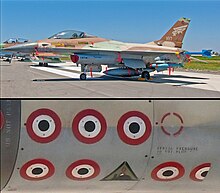
Israeli Air Force F-16A Netz 107 with 6.5 killing marks of other aircraft and one killing mark of Iraqi nuclear reactor, a world record for a single F-16 fighter
The IDF mission is to "defend the existence, territorial integrity and sovereignty of the state of Israel. To protect the inhabitants of Israel and to combat all forms of terrorism which threaten the daily life."[66]
Main doctrine
The main doctrine consists of the following principles:[67]
Basic points
- Israel cannot afford to lose a single war
- Defensive on the strategic level, no territorial ambitions
- Desire to avoid war by political means and a credible deterrent posture
- Preventing escalation
- Determine the outcome of war quickly and decisively
- Combating terrorism
- Very low casualty ratio
Prepare for defense
- A small standing army with an early warning capability, regular air force and navy
- An efficient reserve mobilization and transportation system
Move to counterattack
- Multi-arm coordination
- Transferring the battle to enemy territory quickly
- Quick attainment of war objectives
Code of conduct
In 1992, the IDF drafted a Code of Conduct that combines international law, Israeli law, Jewish heritage and the IDF's own traditional ethical code—the IDF Spirit (Hebrew: רוח צה"ל, Ru'ah Tzahal).[68]
Stated values of the IDF
The document defines three core values for all IDF soldiers to follow, as well as ten secondary values (the first being most important, and the others appearing sorted in Hebrew alphabetical order):[68]
- Core values
- Defense of the State, its Citizens and its Residents – "The IDF's goal is to defend the existence of the State of Israel, its independence and the security of the citizens and residents of the state."
- Love of the Homeland and Loyalty to the Country – "At the core of service in the IDF stand the love of the homeland and the commitment and devotion to the State of Israel-a democratic state that serves as a national home for the Jewish People-its citizens and residents."
- Human Dignity – "The IDF and its soldiers are obligated to protect human dignity. Every human being is of value regardless of his or her origin, religion, nationality, gender, status or position."
- Other values
- Tenacity of Purpose in Performing Missions and Drive to Victory – "The IDF servicemen and women will fight and conduct themselves with courage in the face of all dangers and obstacles; They will persevere in their missions resolutely and thoughtfully even to the point of endangering their lives."
- Responsibility – "The IDF servicemen or women will see themselves as active participants in the defense of the state, its citizens and residents. They will carry out their duties at all times with initiative, involvement and diligence with common sense and within the framework of their authority, while prepared to bear responsibility for their conduct."
- Credibility – "The IDF servicemen and women shall present things objectively, completely and precisely, in planning, performing and reporting. They will act in such a manner that their peers and commanders can rely upon them in performing their tasks."
- Personal Example – "The IDF servicemen and women will comport themselves as required of them, and will demand of themselves as they demand of others, out of recognition of their ability and responsibility within the military and without to serve as a deserving role model."
- Human Life – "The IDF servicemen and women will act in a judicious and safe manner in all they do, out of recognition of the supreme value of human life. During combat they will endanger themselves and their comrades only to the extent required to carry out their mission."
- Purity of Arms – "The soldier shall make use of his weaponry and power only for the fulfillment of the mission and solely to the extent required; he will maintain his humanity even in combat. The soldier shall not employ his weaponry and power in order to harm non-combatants or prisoners of war, and shall do all he can to avoid harming their lives, body, honor and property."
- Professionalism – "The IDF servicemen and women will acquire the professional knowledge and skills required to perform their tasks, and will implement them while striving continuously to perfect their personal and collective achievements."
- Discipline – "The IDF servicemen and women will strive to the best of their ability to fully and successfully complete all that is required of them according to orders and their spirit. IDF soldiers will be meticulous in giving only lawful orders, and shall refrain from obeying blatantly illegal orders."
- Comradeship – "The IDF servicemen and women will act out of fraternity and devotion to their comrades, and will always go to their assistance when they need their help or depend on them, despite any danger or difficulty, even to the point of risking their lives."
- Sense of Mission – "The IDF soldiers view their service in the IDF as a mission; they will be ready to give their all in order to defend the state, its citizens and residents. This is due to the fact that they are representatives of the IDF who act on the basis and in the framework of the authority given to them in accordance with IDF orders."
Military ethics of fighting terror
In 2005, Asa Kasher and Amos Yadlin co-authored a noticed article published in the Journal of Military Ethics under the title: "Military Ethics of Fighting Terror: An Israeli Perspective". The article was meant as an "extension of the classical Just War Theory", and as a "[needed] third model" or missing paradigm besides which of "classical war (army) and law enforcement (police).", resulting in a "doctrine (...) on the background of the IDF fight against acts and activities of terror performed by Palestinian individuals and organizations."[69]
In this article, Kasher and Yadlin came to the conclusion that targeted killings of terrorists were justifiable, even at the cost of hitting nearby civilians. In a 2009 interview to Haaretz, Asa Kasher later confirmed, pointing to the fact that in an area in which the IDF does not have effective security control (e.g., Gaza, vs. Est-Jerusalem), soldiers' lives protection takes priority over avoiding injury to enemy civilians.[70]Some, along with Avishai Margalit and Michael Walzer, have recused this argument, advancing that such position was "contrary to centuries of theorizing about the morality of war as well as international humanitarian law",[71] since drawing "a sharp line between combatants and noncombatants" would be "the only morally relevant distinction that all those involved in a war can agree on."[72]
The article was intended to (then Chief of Staff) Moshe Ya'alon, to serve as a basis for a new "code of conduct". Although Moshe Ya'alon did endorse the article's views, and is reported to have presented it numerous times before military forums, it was never actually turned into a binding IDF document or an actual "code", neither by Ya'alon nor its successors. However, the document have since reportedly been adapted to serve as educational material, designed to emphasizes the right behavior in low intensity warfare against terrorists, where soldiers must operate within a civilian population.[73]
As of today "The Spirit of the IDF" (cf. supra) is still considered the only biding moral code that formally applies to the IDF troops. In 2009, Amos Yadlin (then head ofMilitary Intelligence) suggested that the article he co-authored with Asa Kasher be ratified as a formal binding code, arguing that "the current code ['The Spirit of the IDF'] does not sufficiently address one of the army's most pressing challenges:asymmetric warfare against terrorist organizations that operate amid a civilian population".[74]
The 11 key points highlighted in the article and educational material mentioned above:
- Military action can be taken only against military targets.
- The use of force must be proportional.
- Soldiers may only use weaponry they were issued by the IDF.
- Anyone who surrenders cannot be attacked.
- Only those who are properly trained can interrogate prisoners.
- Soldiers must accord dignity and respect to the Palestinian population and those arrested.
- Soldiers must give appropriate medical care, when conditions allow, to themselves and to enemies.
- Pillaging is absolutely and totally illegal.
- Soldiers must show proper respect for religious and cultural sites and artifacts.
- Soldiers must protect international aid workers, including their property and vehicles.
- Soldiers must report all violations of this code.
Command and Control
According to the Israeli Basic Law: The IDF adopted in 1976, the IDF is subject to the authority of the Government. The Minister in charge of the IDF on behalf of the Government is the Minister of Defense. The supreme command level in the military, the Chief of the General Staff, the military's Commander in Chief, is appointed by and subject to the authority of the civilian Government and is subordinate to the Minister of Defense (not the Ministry of Defense itself).
However, in the years after the establishment of Israel, the Military establishment enjoyed a degree of independence given to it by Ben-Gurion. This was evident in the attendance of the Chief of General Staff in Cabinet and security Cabinet meetings as an equal and not as a subordinate. Even after the Agranat Commissioninquiry following the 1973 Yom Kippur War, when the roles, the powers, and the duties of the Prime Minister, Defense Minister and Chief of General Staff were clarified and the rules and standards of monitoring where established between the military and the political spheres, the military still continued to enjoy an overlarge status on the expense of the civilian authority.
Budget
During 1950–66, Israel spent an average of 9% of its GDP on defense. Defense expenditures increased dramatically after both the 1967 and 1973 wars. They reached a high of about 24% of GDP in the 1980s, but have since come down significantly, following the signing of peace agreements with Jordan and Egypt.
On 30 September 2009 Defense Minister Ehud Barak, Finance Minister Yuval Steinitz and Prime Minister Benjamin Netanyahu endorsed an additional NIS 1.5 billion for the defense budget to help Israel address problems regarding Iran. The budget changes came two months after Israel had approved its current two-year budget. The defense budget in 2009 stood at NIS 48.6 billion and NIS 53.2 billion for 2010 – the highest amount in Israel's history. The figure constituted 6.3% of expected gross domestic product and 15.1% of the overall budget, even before the planned NIS 1.5 billion addition.[75]
However, in 2011, the prime minister Benjamin Netanyahu reversed course and moved to make significant cuts in the defense budget in order to pay for social programs.[76] The General Staff concluded that the proposed cuts endangered the battle readiness of the armed forces.[77] In 2012, Israel spent $15.2 billion on its armed forces, one of the highest ratios of defense spending to GDP among developed countries ($1,900 per person). However, Israel's spending per capita is below that of the USA.[78]
Weapons and equipment
Military technology
The IDF possesses top-of-the-line weapons and computer systems. Some gear comes from the US (with some equipment modified for IDF use) such as the M4A1 and M16 assault rifles, theM24 SWS 7.62 mm bolt action sniper rifle, theSR-25 7.62 mm semi-automatic sniper rifle, theF-15 Eagle and F-16 Fighting Falcon fighter jets, and the AH-1 Cobra and AH-64D Apache attack helicopters. Israel has also developed its own independent weapons industry, which has developed weapons and vehicles such as theMerkava battle tank series, Nesher and Kfirfighter aircraft, and various small arms such as the Galil and Tavor assault rifles, and the Uzisubmachine gun. Israel has also installed a variant of the Samson RCWS, a remote controlled weapons platform, which can include machine guns, grenade launchers, and anti-tank missiles on a remotely operated turret, inpillboxes along the Israeli Gaza Strip barrierintended to prevent Palestinian militants from entering its territory.[79] [80] Israel has developed observation balloons equipped with sophisticated cameras and surveillance systems used to thwart terror attacks from Gaza.[81] The IDF also possesses advanced combat engineering equipment which include the IDF Caterpillar D9 armored bulldozer, IDF PumaCEV, Tzefa Shiryon and CARPET minefield breaching rockets, and a variety of robots and explosive devices.
The IDF also has several large internal research and development departments, and it purchases many technologies produced by the Israeli security industries includingIAI, IMI, Elbit Systems, Rafael, and dozens of smaller firms. Many of these developments have been battle-tested in Israel's numerous military engagements, making the relationship mutually beneficial, the IDF getting tailor-made solutions and the industries a good reputation.
In response to the price overruns on the US Littoral Combat Ship program, Israel is considering producing their own warships, which would take a decade[82] and depend on diverting US financing to the project.[83]
Main developments
Israel's military technology is most famous for its firearms, armored fighting vehicles(tanks, tank-converted armored personnel carriers (APCs), armoured bulldozers, etc.), unmanned aerial vehicles, and rocketry (missiles and rockets). Israel also has manufactured aircraft including the Kfir (reserve), IAI Lavi (canceled), and the IAI Phalcon Airborne early warning System, and naval systems (patrol and missile ships). Much of the IDF's electronic systems (intelligence, communication, command and control, navigation etc.) are Israeli-developed, including many systems installed on foreign platforms (esp. aircraft, tanks and submarines), as are many of its precision-guided munitions. Israel is the world's largest exporter ofdrones.[84]
Israel Military Industries (IMI) is known for its firearms. The IMI Galil, the Uzi, the IMI Negev light machine gun and the new Tavor TAR-21 Bullpup assault rifle are used by the IDF.
Israel is the only country in the world with an operational anti-ballistic missile defense system on the national level – the Arrow system, jointly funded and produced by Israel and the United States. The Iron Dome system against short-range rockets is operational and proved to be successful. David's Sling, an anti-missile system designed to counter medium range rockets is under development. Israel has also worked with the US on development of a tactical high energy lasersystem against medium range rockets (called Nautilus or THEL).
Israel has the independent capability of launching reconnaissance satellites into orbit, a capability shared with Russia, the United States, the United Kingdom, France, South Korea, Italy, Germany, the People's Republic of China, India, Japan, Brazil and Ukraine. Israeli security industries developed both the satellites (Ofeq) and the launchers (Shavit).
Israel is known to have developed nuclear weapons.[85] Israel does not officially acknowledge its nuclear weapons program. It is thought Israel possesses between one hundred and four hundred nuclear warheads.[85] [86] It is believed that Jericho intercontinental ballistic missiles are capable of delivering nuclear warheads with a superior degree of accuracy and a range of 11,500 km.[87] Israeli F-15 and F-16fighter-bomber aircraft also have been cited as possible nuclear delivery systems.[88] [89] [90] The U.S. Air Force F-15 has tactical nuclear weapon capability.[91] It has been asserted that Dolphin submarines have been adapted to carry Popeye TurboSubmarine-launched cruise missiles with nuclear warheads, so as to give Israel asecond strike capacity.[92] [93]
From 2006 Israel deployed the Wolf Armoured Vehicle APC for use in urban warfareand to protect VIPs.
Read the entire article on Wikipedia
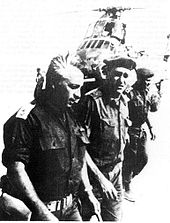
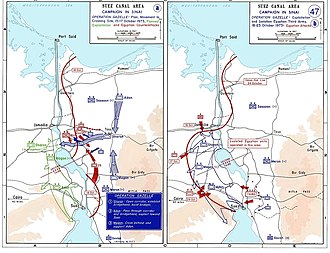
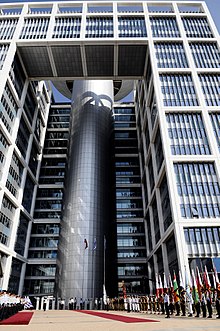
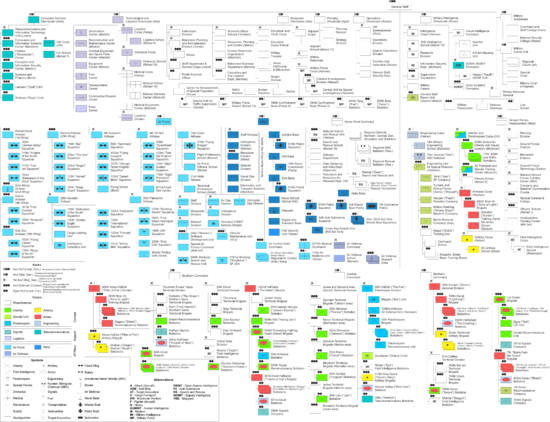
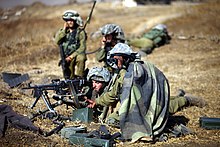






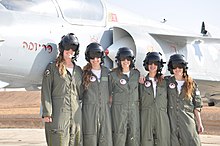


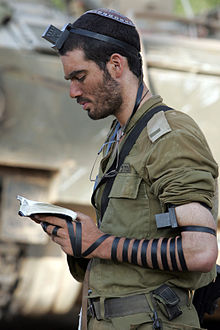


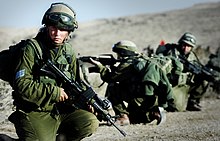


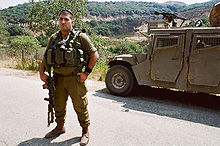
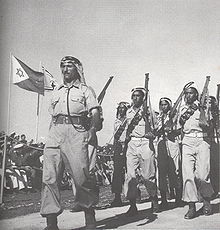






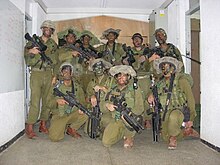
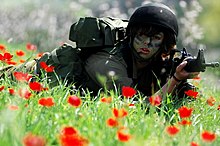


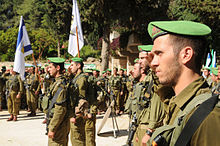


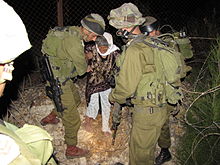












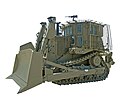
No comments:
Post a Comment